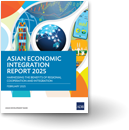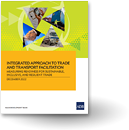Production networks: How can Asia manage the risks and opportunities?
Due to unusually severe flooding during the 2011 monsoon season in Thailand, Toyota lost output of 150,000 vehicles and reduced output in the US, Canada, South Africa, Malaysia and other Asian countries. The fact that car production in the US was affected by a natural disaster over 10,000 kilometers away shows just how dependent companies and countries have become on global production networks. Production network trade has tripled over the past 10 years, reaching 3 trillion US dollars in 2011. How can governments in Asia - which account for around 50% of global production network trade - seize the opportunities of production networks, while mitigating some of the downside risks?
Evidence shows that the development of labor-intensive industries, which are typical of production network trade, is an important contributor to poverty reduction. Foreign firms, taking advantage of low labor costs by engaging in production network trade, have invested almost $500 billion in the People’s Republic of China (PRC) and employ about 16 million people.
Given these immense opportunities, a logical question is: how can countries increase their participation in production network trade? International firms are the main players in production networks. To attract foreign investment, countries can improve the domestic business environment. For example, by strengthening competition laws or simplifying ownership regulations. According to a representative study of Asian firms the following policy measures could help SMEs to participate in production networks:
- Achieve and maintain political stability and reduce economic uncertainty
- Improve access to finance
- Provide labor skills for the production and export of niche products (e.g. high plateau tea or coffee)
A second important question for policy makers is: how can countries increase the rewards of production network trade for economic growth and poverty reduction? Benefits may be increased if countries are able to:
- Encourage knowledge spillovers from trading partners
- Create opportunities for skill upgrading in service jobs (e.g. from call centers to software development)
But, participating in production networks is only the first step. Countries need to think carefully about the policy measures that would increase the domestic spillovers. One example might be partnerships between private investors and local education institutions to ensure the supply of skilled workers.
As Toyota’s experience highlights, the risks of dependence on production networks should not be downplayed. Important risks to consider include:
- Exogenous shocks (e.g. earthquakes or tsunamis) which can heavily affect the activities of production networks
- When engaging in production networks countries must ensure that labor standards are followed to prevent exploitation of workers or child labor.
- Once countries move up the value chain and begin outsourcing tasks to other developing countries, fears of job losses and reduced wages may arise. This process is already evident in Asia, with Indonesia and Viet Nam succeeding PRC as a low cost and low end manufacturing locations
With an appropriate mix of policies to mitigate shocks, protect workers, promote skill formation and continuously improve the domestic business climate, countries should be able to continue benefitting from production networks, even as they move up the value chain.




